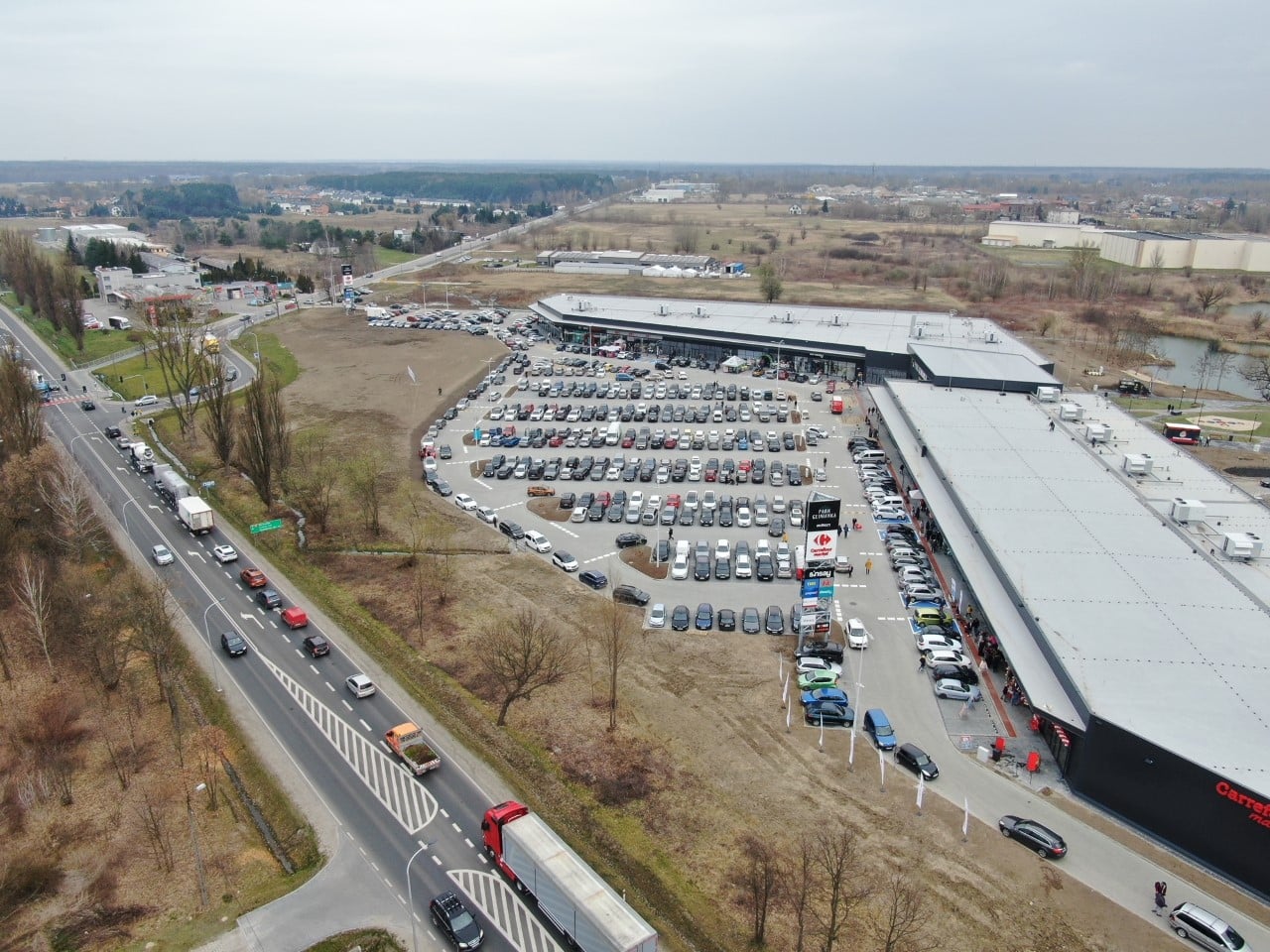The inception of the retail park market in Poland is linked to the political changes of the 1990s, with the first properties emerging at the end of that decade. Industry pioneers established retail parks on the outskirts of key urban areas, creating the first shopping destinations, complemented by neighboring retail establishments.
Over the following two decades, the development of retail parks progressed at a varied pace. By the end of 2019, the sector had 1.5 million square meters of GLA in retail parks over 5,000 square meters. The COVID-19 pandemic significantly impacted the perception of these types of properties, which—due to their structure—were able to comply with health restrictions and largely remained open. Unlike traditional shopping centers, retail parks offer units with direct access to parking and lack common areas.
After this pivotal moment, both consumer shopping habits and investor perceptions of retail parks underwent a transformation, leading to a genuine boom in this sector. From 2020 to 2023, supply increased by an additional 1.1 million square meters of GLA, with another 180,000 square meters added in the first half of 2024 and a projected new supply of 300,000 square meters for the second half of 2024. Furthermore, according to investor announcements, approximately 500,000 square meters of new properties are expected to be completed in 2025, marking a record in terms of new developments.
Since 2020, the development of retail parks in Poland has significantly accelerated, with no signs of slowing down. Given the maturity of the market, over 70% of new projects completed during this period fell within the range of 5,000 to 10,000 square meters of GLA, with investors primarily focusing on smaller towns that have yet to be saturated with modern retail offerings. Of more than 100 such retail parks, 68 are located in towns with populations below 50,000. Larger retail parks, ranging from 10,000 to 20,000 square meters of GLA, accounted for 32% of new supply, while eight projects between 20,000 and 40,000 square meters of GLA represented 15% of new space.
Currently, Poland has 260 large retail parks (with GLA above 5,000 square meters) totaling 2.9 million square meters of GLA. The rapid growth of this format has doubled its share of modern retail space in Poland to 18%, up from just 9% in 2010. Moreover, over 80% of the modern retail space currently under construction consists of retail parks.
In recent years, most retail parks have featured smaller areas, around 5,000 square meters of GLA. These parks have supplemented the existing retail landscape or introduced modern retail facilities to smaller towns for the first time. Currently, there is a noticeable shift toward implementing larger investments. There are 35 large retail parks (over 5,000 square meters of GLA) under construction or expansion, with 13 exceeding 10,000 square meters of GLA.
The largest retail park currently under construction is PH Osada in Żyrardów (33,000 square meters of GLA). Retail parks exceeding 10,000 square meters of GLA constitute 57% of the new retail space being developed in this category, highlighting the growing trend toward larger formats.
Larger retail parks have become an appealing alternative to traditional regional shopping centers, offering tenants lower operational costs and enabling them to expand into previously inaccessible markets. Their efficiency and attractiveness attract operators who typically focus on traditional shopping centers, and who are increasingly choosing retail parks as their locations. This trend encompasses a diverse range of tenants, particularly in the value fashion and food sectors, as well as service providers such as gyms, playgrounds, and even childcare facilities.
The dynamic growth in the supply of small retail parks and convenience shopping centers ranging from 2,000 to 5,000 square meters of GLA confirms the rising appeal of this format in the Polish market. The total inventory of such properties in Poland is estimated at 1.1 million square meters of GLA. This rapid expansion, particularly in towns with populations between 10,000 and 50,000, is prompting retail chains that were previously absent from smaller investments to consider entry into such properties. In larger urban areas, the development of the convenience format aligns with the 15-minute city concept, which aims to provide access to essential services and shops in close proximity.
In recent years, interest from investors, developers, and tenants in retail parks and smaller convenience centers designed for quick, everyday shopping remains high. Furthermore, the significant development of new convenience and retail park properties attracts investors seeking stable, long-term investment opportunities with extended WAULT (Weighted Average Unexpired Lease Term).
Author: Paulina Brzeszkiewicz-Kuczyńska, Research and Data Manager at Avison Young
Source:[Manager Plus](https://managerplus.pl/parki-handlowe-w-polsce-rekordowo-wysoka-podaz-nowych-projektow-83914)
